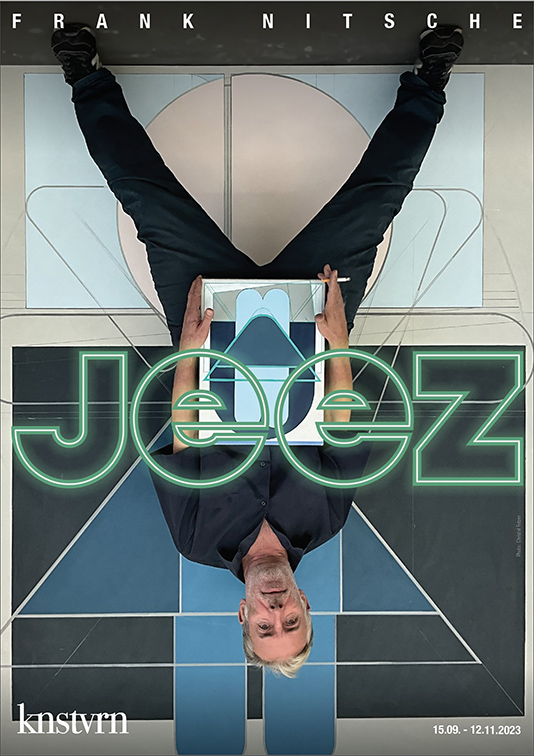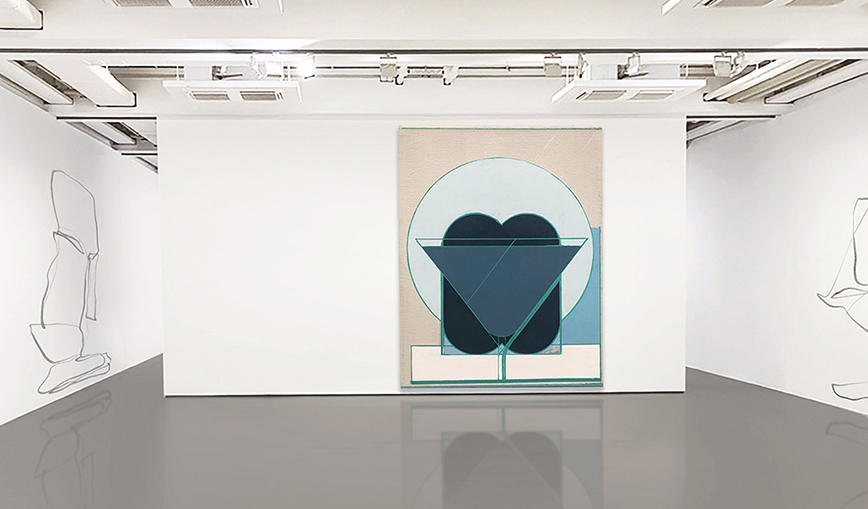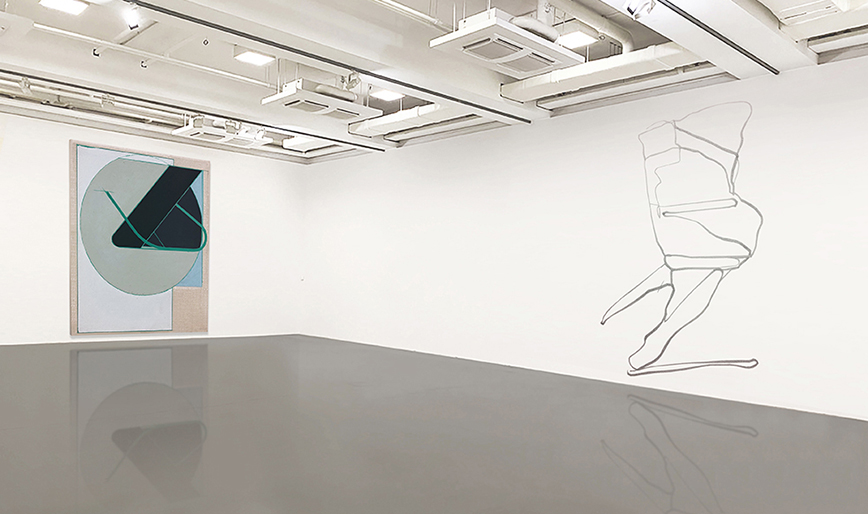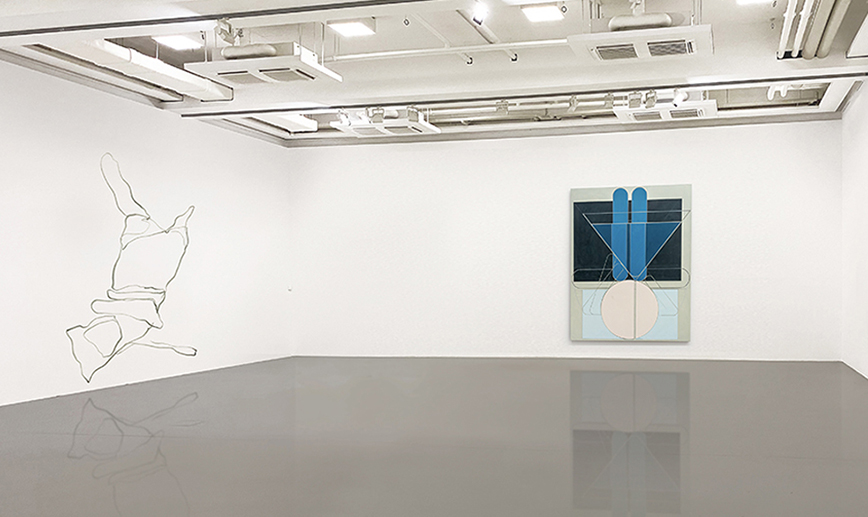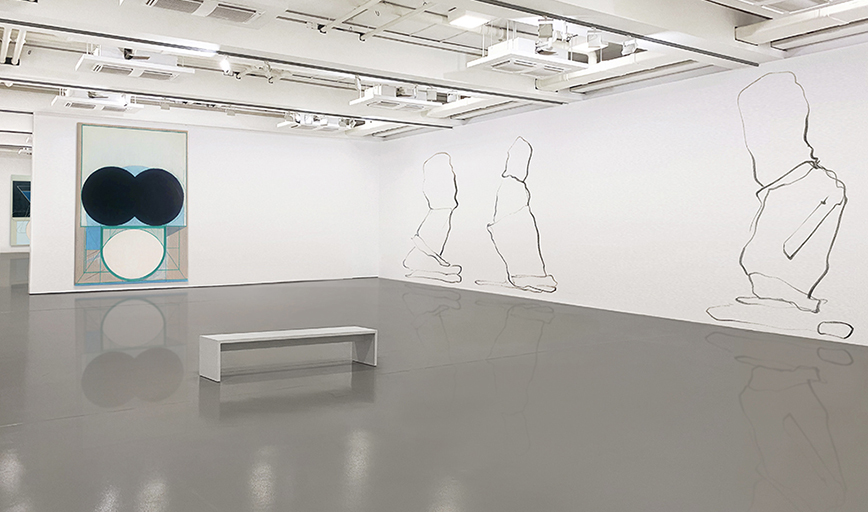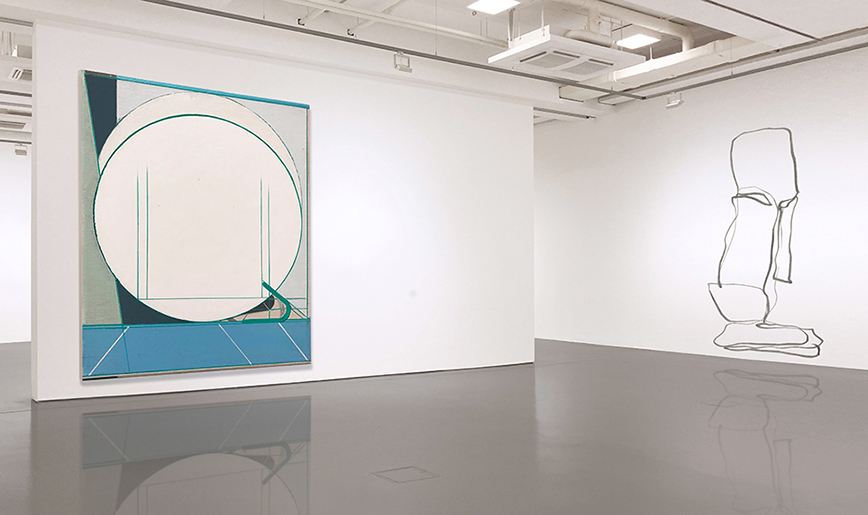*1974 Görlitz
lebt und arbeitet in Berlin
jeez
Seit Jahrzehnten beobachtet Frank Nitsche mit forensischem Interesse die Formen, die unsere Umwelt prägen.
Er legt bändeweise fotografische Alben an, in denen er Abbildungen aus Zeitschriften und anderen Druckwerken
wie ein Taxonom sammelt und collagiert. So erhält die chaotische Objektwelt, die uns mit ihren Deformationen
und Monstererscheinungen umgibt, einen provisorischen Sinn. Die Unfälle des Produktdesigns, Typografien oder
Werbesticker verschmelzen zu einer Formenkunde der globalen Industriegesellschaften: ein Vorrat an Linien
und Kurven, Körpern und den Verhältnissen zwischen ihnen. Nitsches Malerei kopiert diese Typologie jedoch
nicht. Sie entwickelt sich vor ihr wie vor einem unsichtbaren Hintergrund und es sind nur Spuren, die aus
der Außenwelt in die Bildwelt dringen. Über die Zeit ist so ein malerisches Werk von unaufdringlicher, aber
bestimmter Körperlichkeit erwachsen. Es schöpft aus einem Reservoir rekombinierbarer Zungen und Achsen,
Kurven und Kreise, Quadrate und Bögen, Säume und Parallelogramme, die sich in einem langwierigen Prozess
aus Überlagerungen und Abschleifungen, Abtönung der Flächen, Drehungen des Bildkörpers, Korrekturen und
Überarbeitungen zu dichten, widerstandsfähigen Oberflächen verdichten. Der Prozess der Entstehung wird
nicht verdeckt. Aus der Nähe sind seine Spuren klar zu erkennen.
Nitsches Zeichnungen verhalten sich zu diesen Festkörpern der malerischen Formerfindung wie fluide
Geistererscheinungen der künstlerischen Imagination. Unendliche Serien angedeuteter Körper, fragiler
Konturen, intuitiver Impulse bilden die eigene Disziplin rhythmischer Gymnastik auf dem Weg zum malerischen
Entscheidungsprozess. Sie sind Hinleitung und Aufschub, Morphing und Tanz sich verselbständigender Zeichen.
In jeez nun wachsen die kleinen Blätter überraschenderweise zu Monumentalformaten an und konkurrieren ganz
gegen ihre ursprüngliche Logik mit den Leinwänden - eine Rebellion des Dazwischen gegen die Herrschaft der
beglaubigten Artefakte. Ein Witz des Digitalen in Nitsches uneinnehmbarem Reich des handfesten physischen
Widerstands gegen Algorithmen und Automatismen.
Gerrit Gohlke
jeez
For decades, Frank Nitsche has been observing with forensic interest the forms that mold our environment.
He creates albums of volumes in which he compiles and collages images from magazines and other printed works
like a taxonomist. In this way, the chaotic world of objects that surrounds us with its deformations and
monster appearances takes on a provisional meaning. The accidents of product design, typographies or advertising
stickers merge into a study of forms of global industrial societies: a store of lines and curves, bodies and the
relationships between them. Nitsche‘s painting, however, does not copy this typology. It develops in front of it
as if in front of an invisible background and it is only traces that penetrate into the pictorial world from the
outside world. Over time, a painterly work of unobtrusive but definite physicality has grown up. It draws from a
reservoir of recombinable tongues and axes, curves and circles, squares and arcs, edges and parallelograms that
condense into dense, resistant surfaces in a lengthy process of overlaid surfaces and abrasions, tinting of
surfaces, twistings of the entire pictorial object, corrections and reworking. The process of creation is not
concealed. Up close, its traces are clearly visible.
Nitsche‘s drawings relate to these solid bodies of painterly invention of form like fluid ghostly apparitions
of the artistic imagination. Endless series of implied bodies, fragile contours, intuitive impulses form their
own discipline of rhythmic gymnastics on the way to the painterly decision-making process. They are a conduit
and postponement, a morphing and dance of signs that take on a life of their own. In jeez, the small sheets
surprisingly grow into monumental formats and compete with the canvases against their original logic - a
rebellion of the in-between against the rule of authenticated artefacts. A joke of the digital in Nitsche‘s
impregnable realm of tangible physical resistance to algorithms and automatisms.
Gerrit Gohlke
